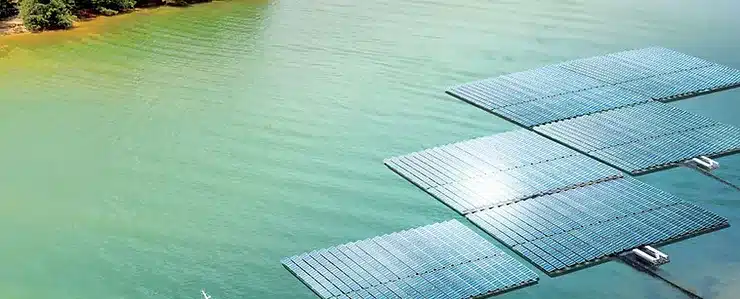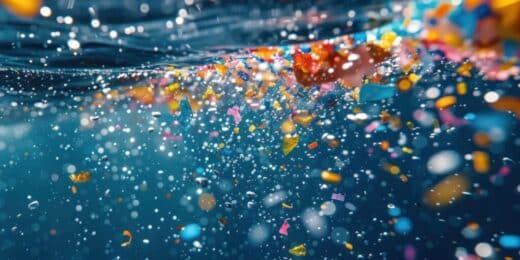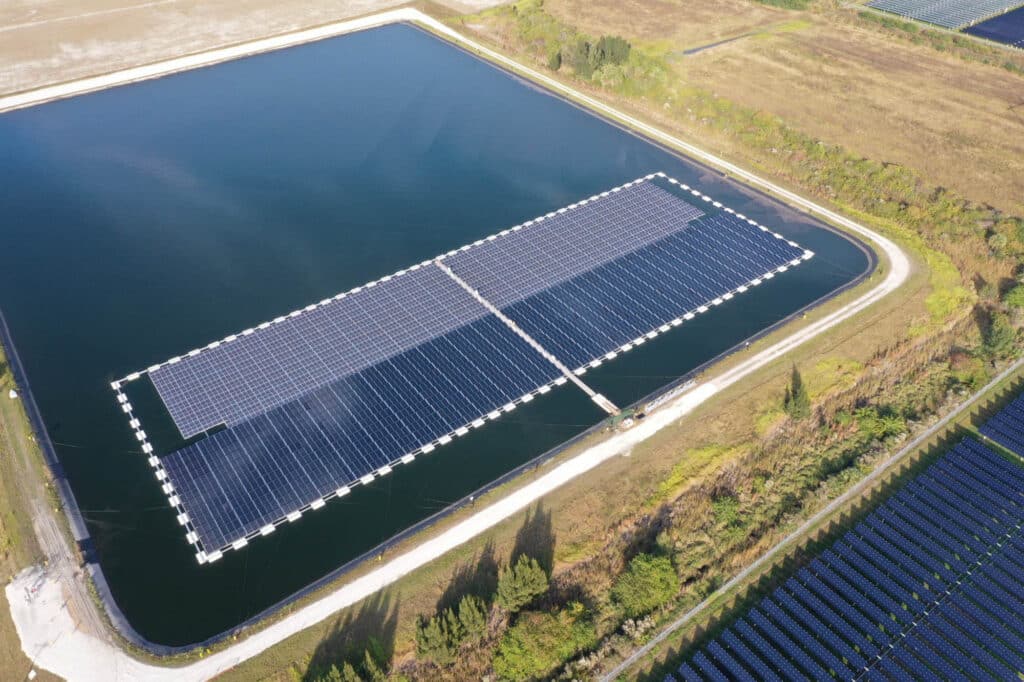In the quest for clean and sustainable energy solutions, innovative technologies have become the driving force behind a green energy revolution. Among these innovative approaches is Floatovoltaic Technology, a groundbreaking concept that integrates solar power with hydropower technology. This fusion of renewable energy sources promises to reshape the way we harness the sun’s energy while leveraging the power of water bodies. In this blog, we will explore the fascinating world of floating solar and how they are revolutionizing the energy landscape with the union of innovative solar and hydropower technology.
Floatovoltaic Technology: A Marriage of Sun and Waterpower
Floatovoltaic technology is a remarkable and ingenious solution that capitalizes on the complementary strengths of solar power and hydropower. This groundbreaking approach entails the installation of solar panels on floating platforms situated on water bodies, including reservoirs, ponds, lakes, and even offshore locations. The marriage of photovoltaic systems with hydropower infrastructure offers an array of compelling advantages:
- Enhanced Energy Generation: Solar panels, perched on the water’s surface, efficiently capture sunlight, and convert it into electricity. The cooling effect of the water heightens
panel efficiency, resulting in increased energy production. - Land Conservation: Utilizing water bodies optimizes space and minimizes the need for
land resources, preserving valuable terrestrial habitats. - Water Conservation: The shade provided by floating solar panels helps reduce water
evaporation, a crucial benefit, especially in water-scarce regions. - Improved Panel Performance: Solar panels placed on water benefit from natural cooling,
which boosts their efficiency and lifespan. Moreover, the water’s self-cleaning action
reduces the maintenance requirements for the panels. - Energy Storage Synergy: Many Floatovoltaic systems are strategically designed to work harmoniously with hydropower facilities. Excess solar energy can pump water uphill,
storing it for later release. This clever integration effectively transforms reservoirs into
large-scale energy storage solutions.
Innovative Solar: Unlocking Floatovoltaic Potential
The versatility of Floatovoltaic technology renders it suitable for a wide array of applications across various industries and settings:
- Integrating solar panels with existing hydropower reservoirs augments energy generation and facilitates energy storage, providing a comprehensive clean energy solution.
- Floating solar installations on drinking water reservoirs produce clean energy without compromising water quality, fostering sustainability and reliability.
- Wastewater Treatment Plants equipped with substantial bodies of water can repurpose these areas for Floatovoltaic systems, thereby reducing energy costs and environmental impact.
- In coastal regions, offshore floating solar panels leverage expansive water bodies to generate clean energy efficiently.
Embrace the Future of Sustainable Energy with AccuSolar’s Innovative Floating Solar Solutions
Floatovoltaic technology represents groundbreaking innovative solar to create a sustainable energy solution. Floating solar systems are a step forward in the evolution of renewable energy. As research and development in this field advances, we anticipate witnessing the broader integration of this technology into our energy landscape, ultimately propelling us toward a cleaner and more sustainable energy future. The marriage of innovative solar and hydropower technology through floating solar is indeed a beacon of hope for a greener and more sustainable world.
AccuSolar is committed to providing our customers with the best possible floating solar solutions. Let us help you design your floating solar systems. Contact us today!





